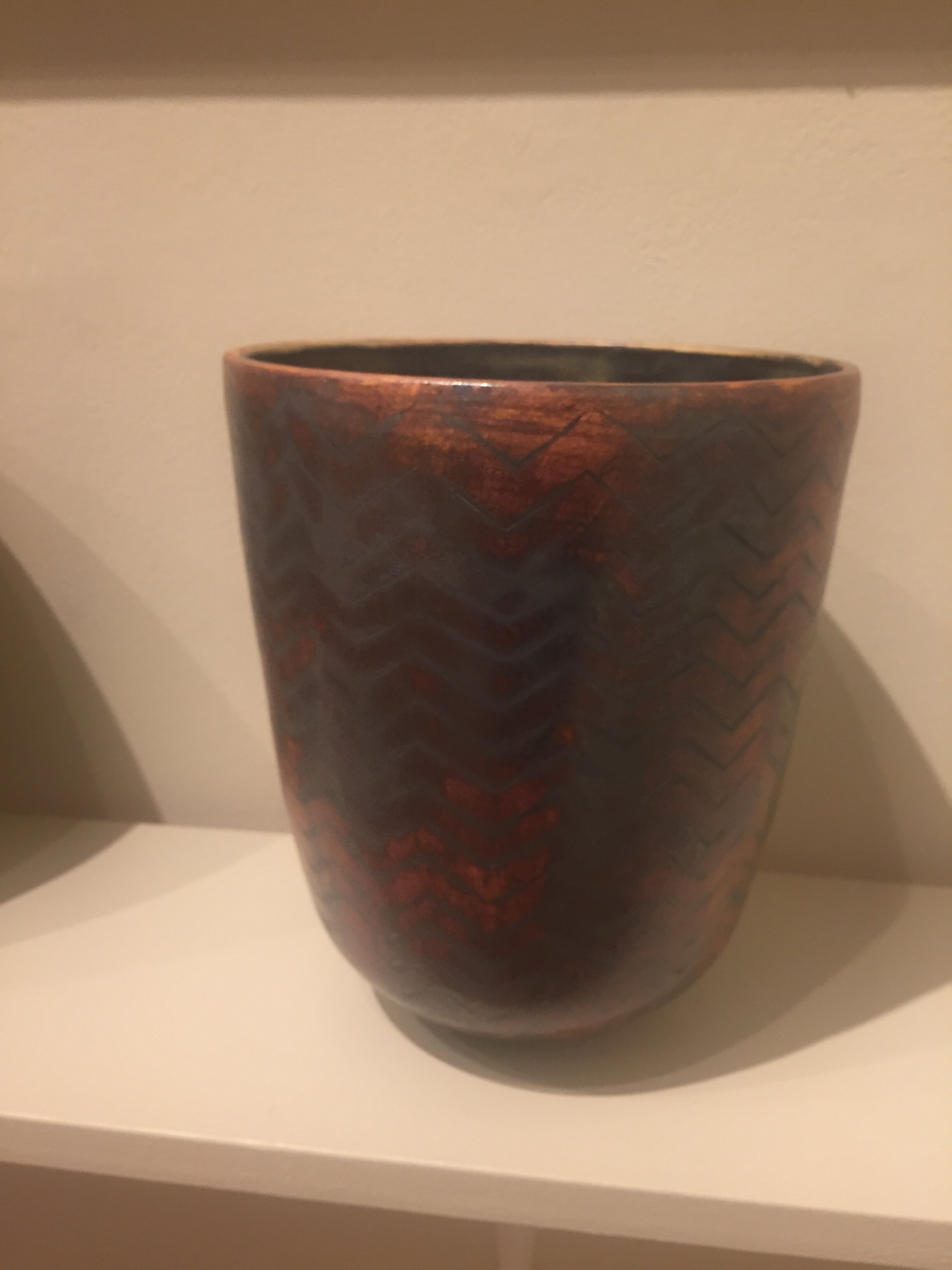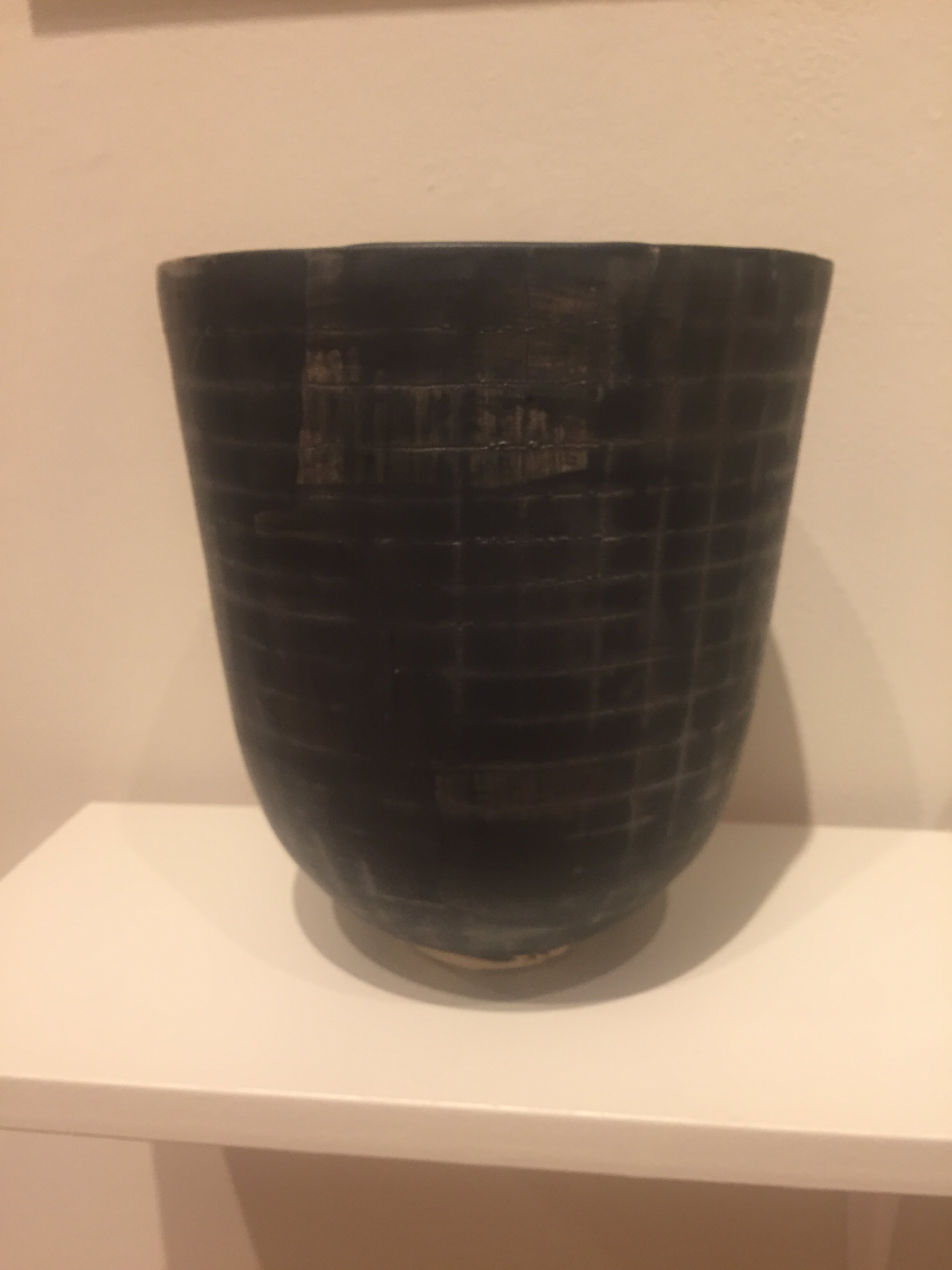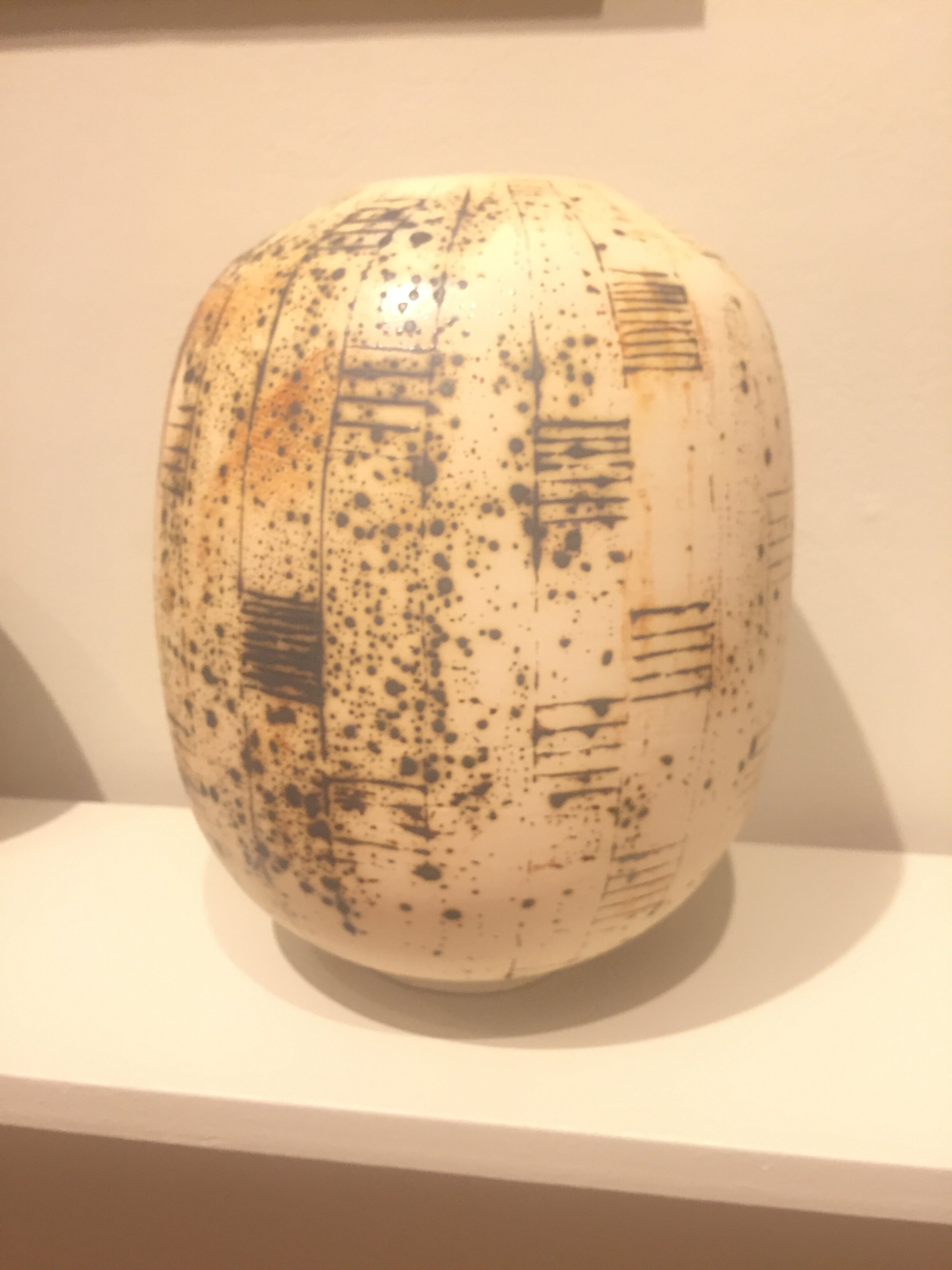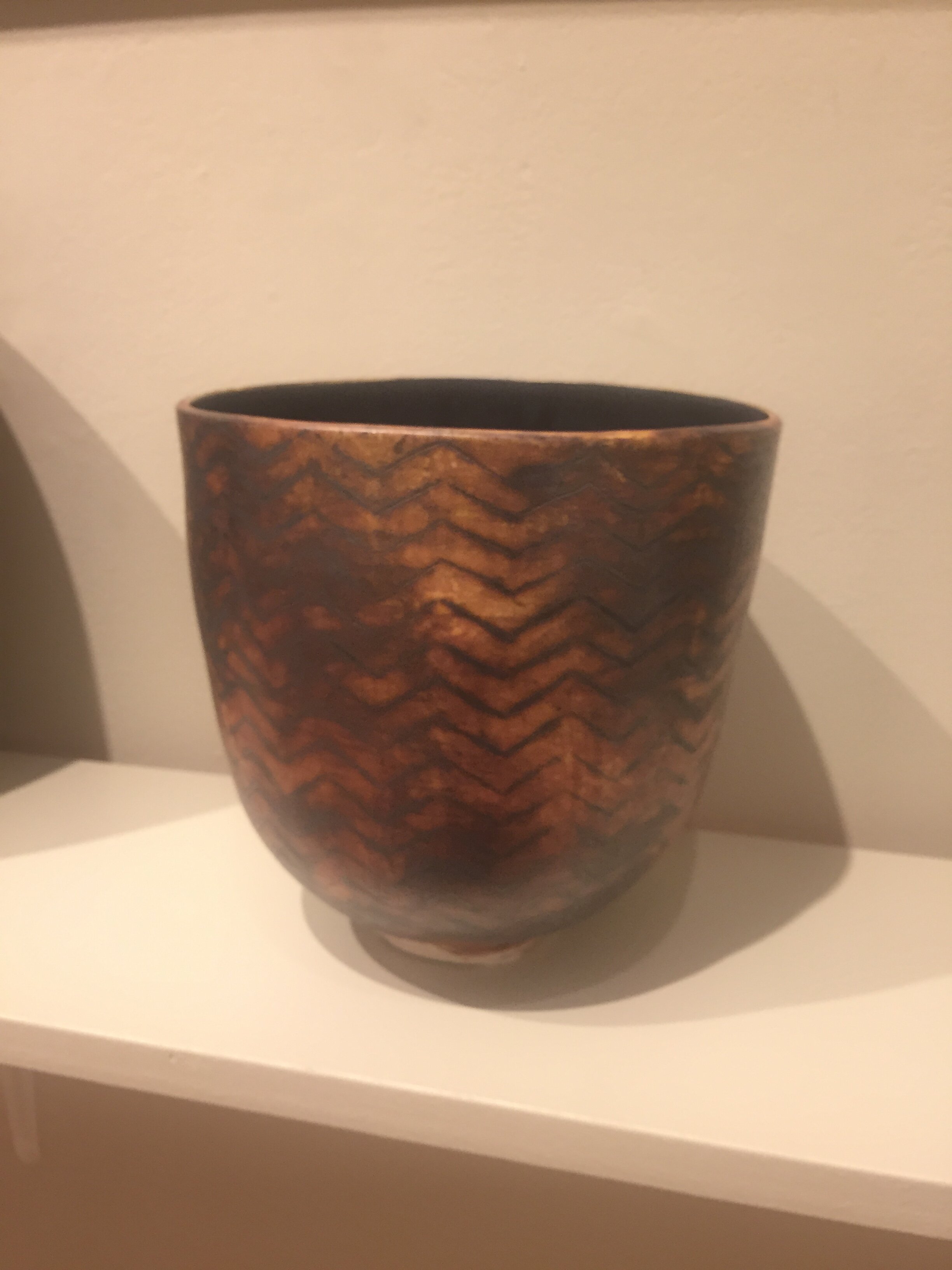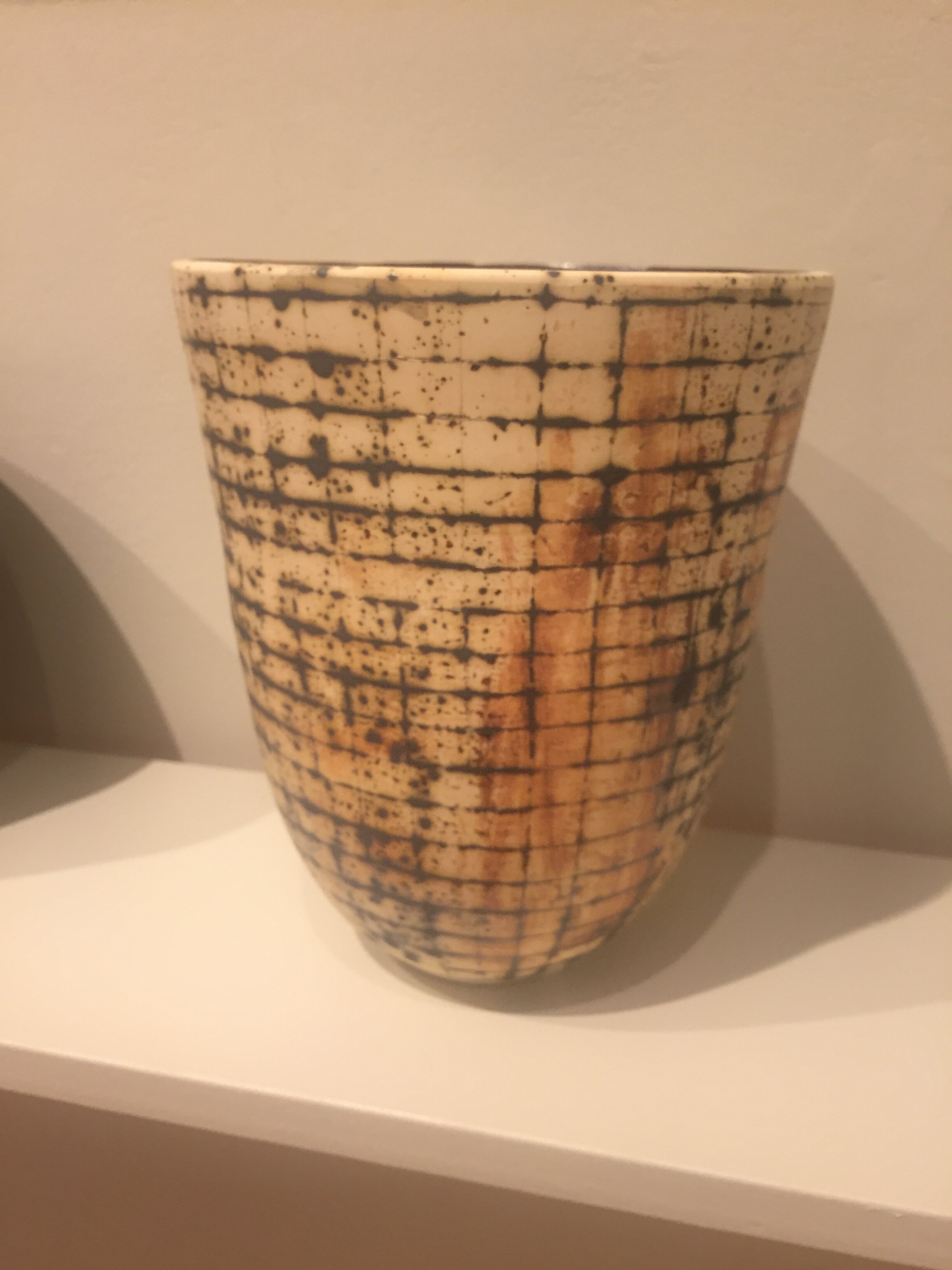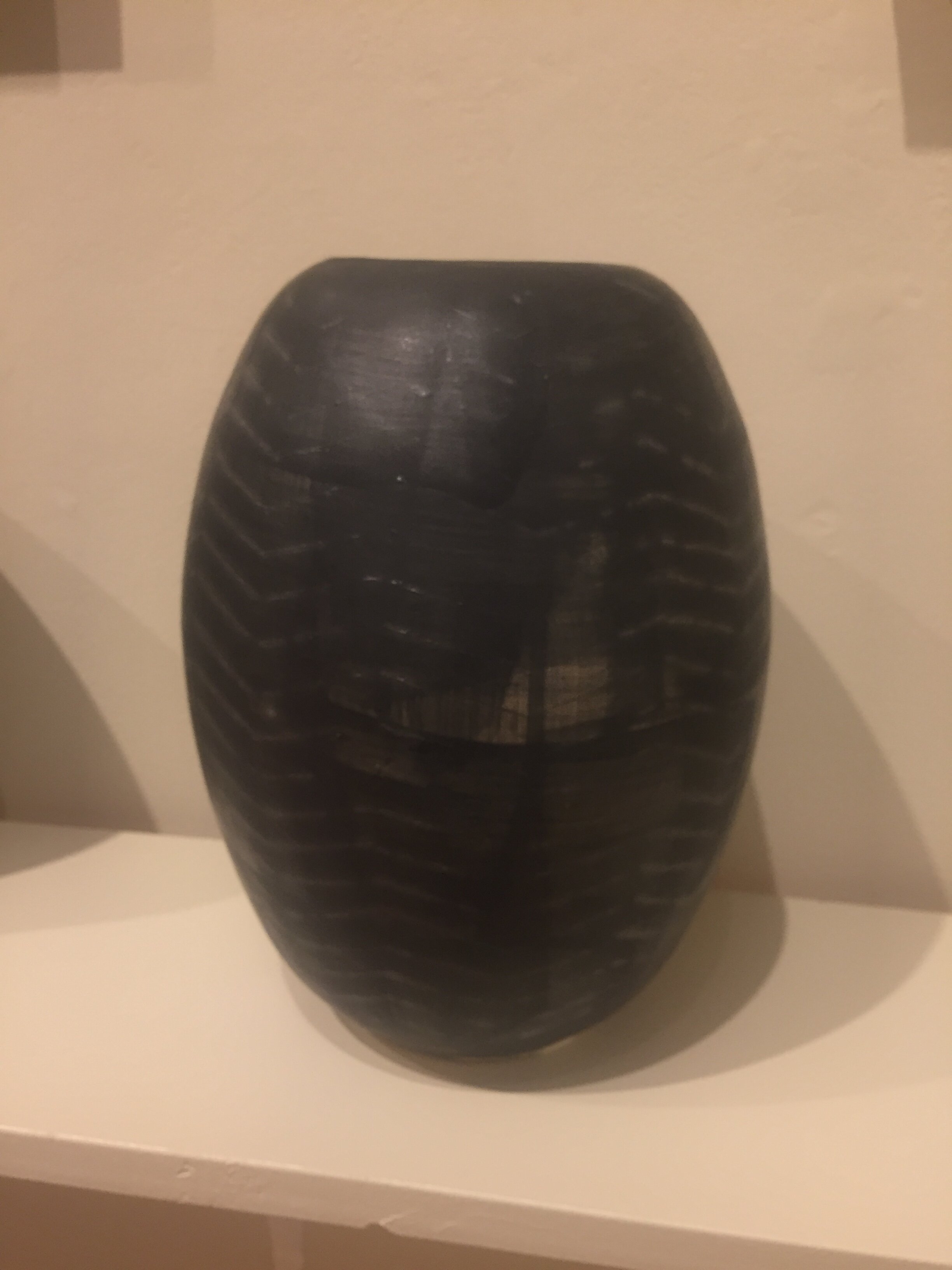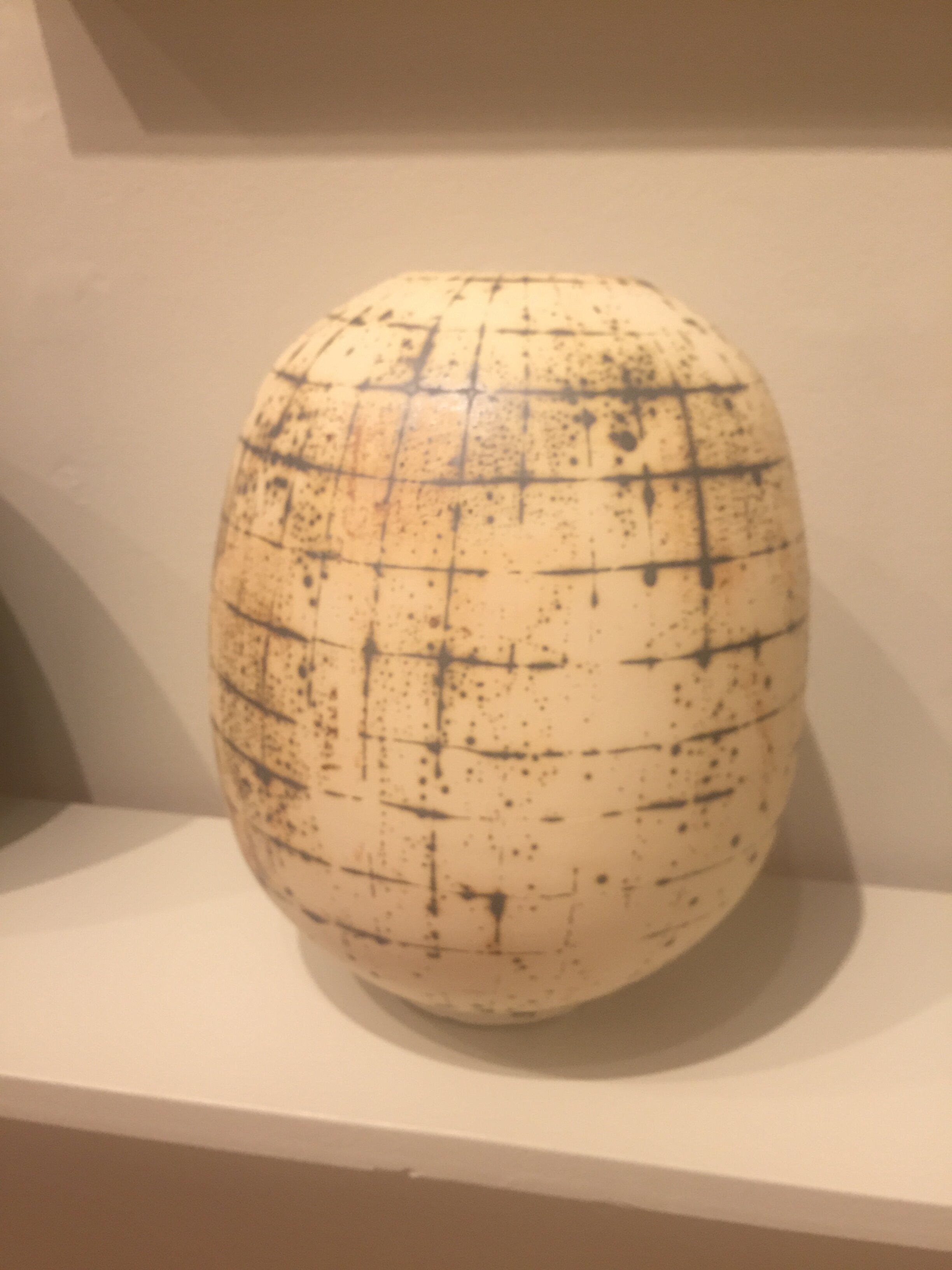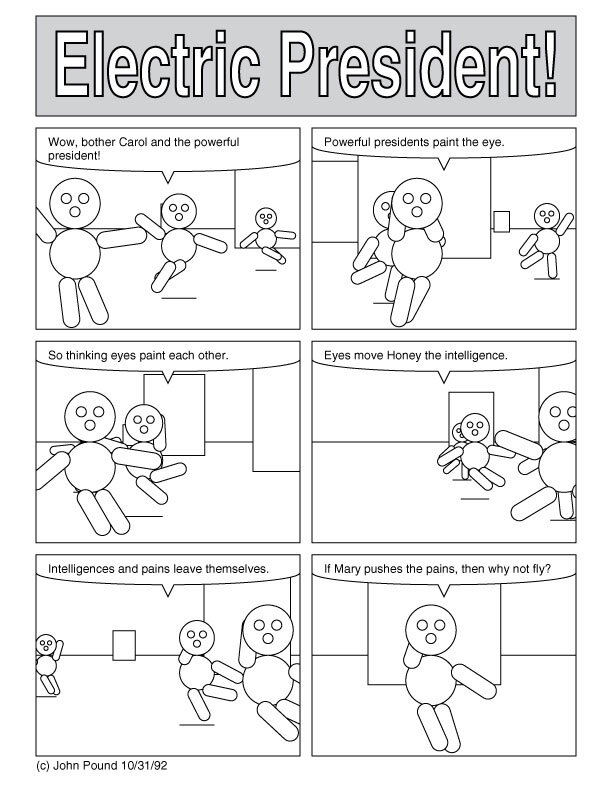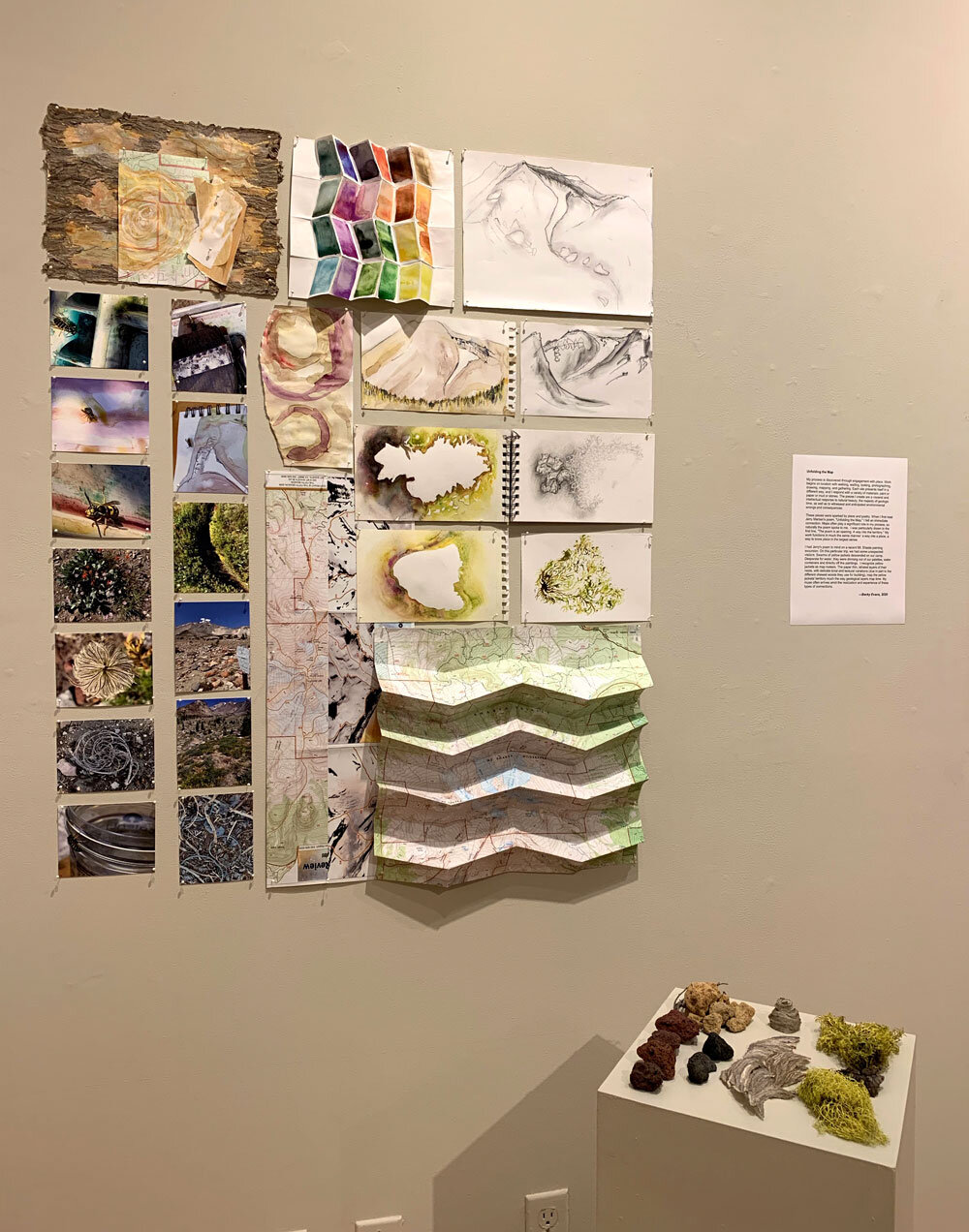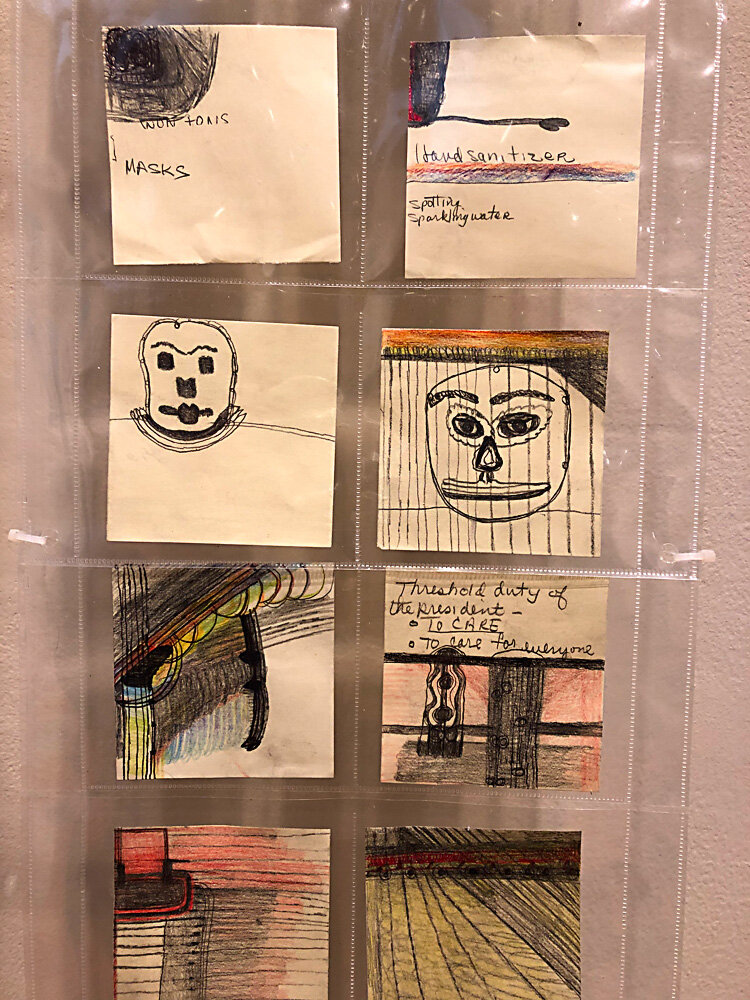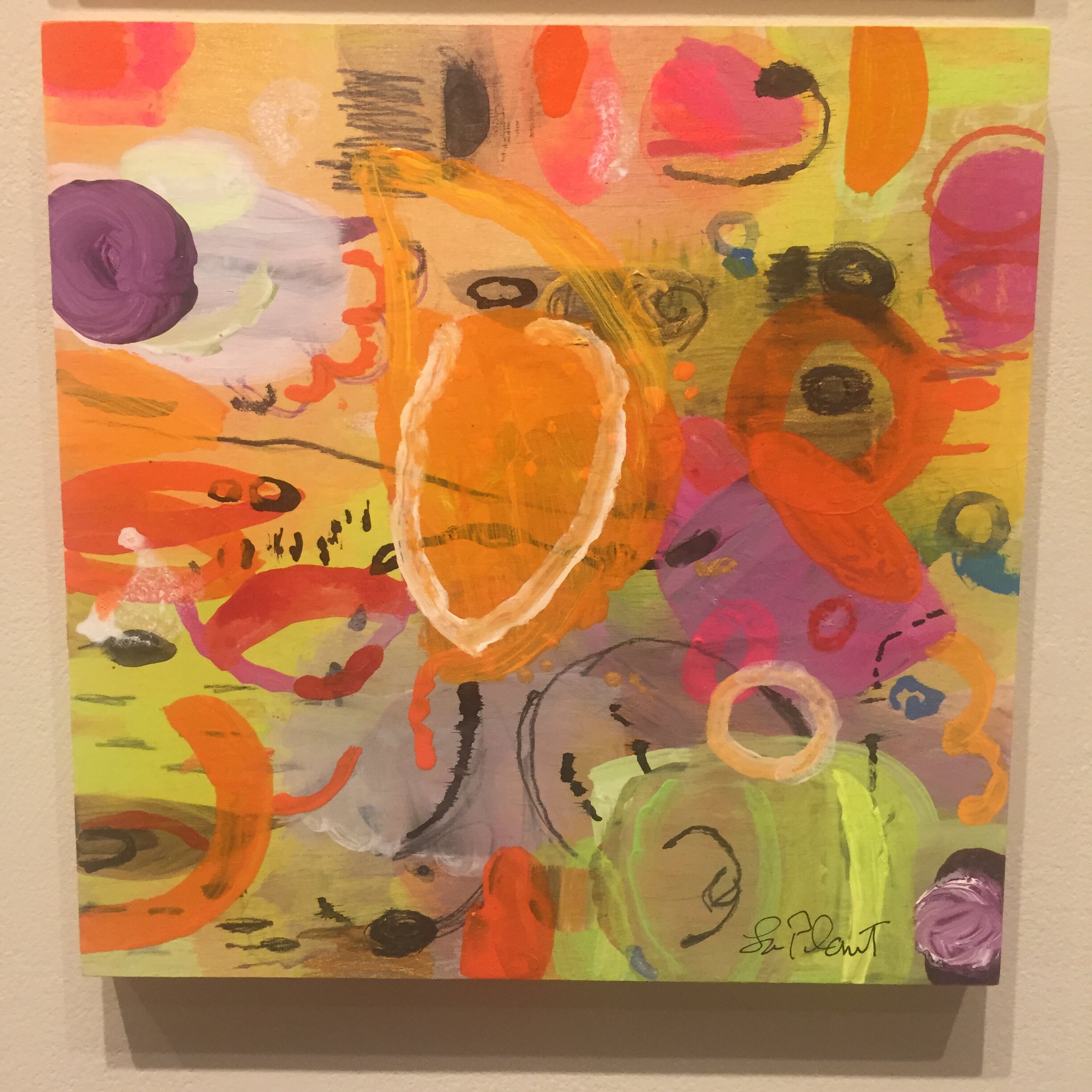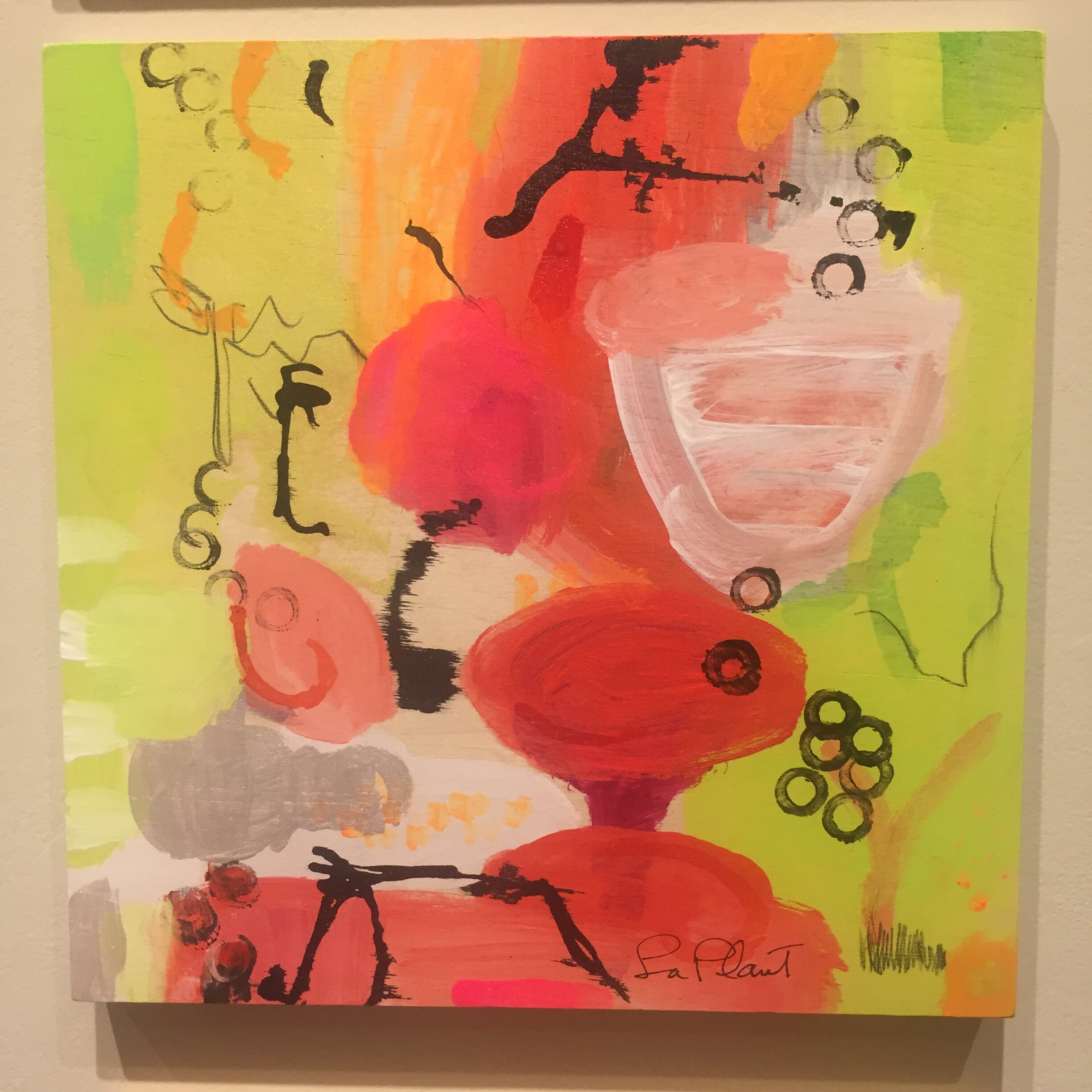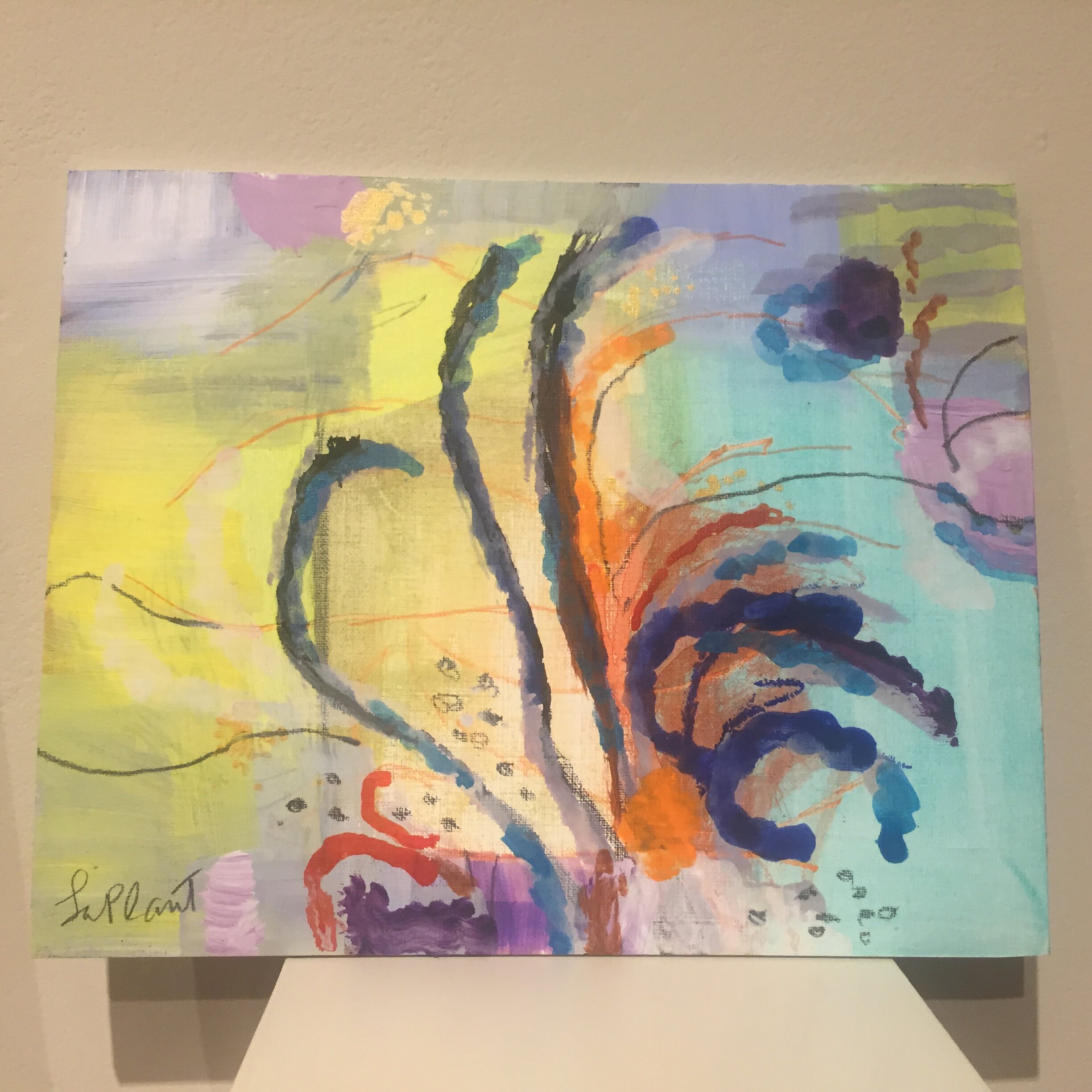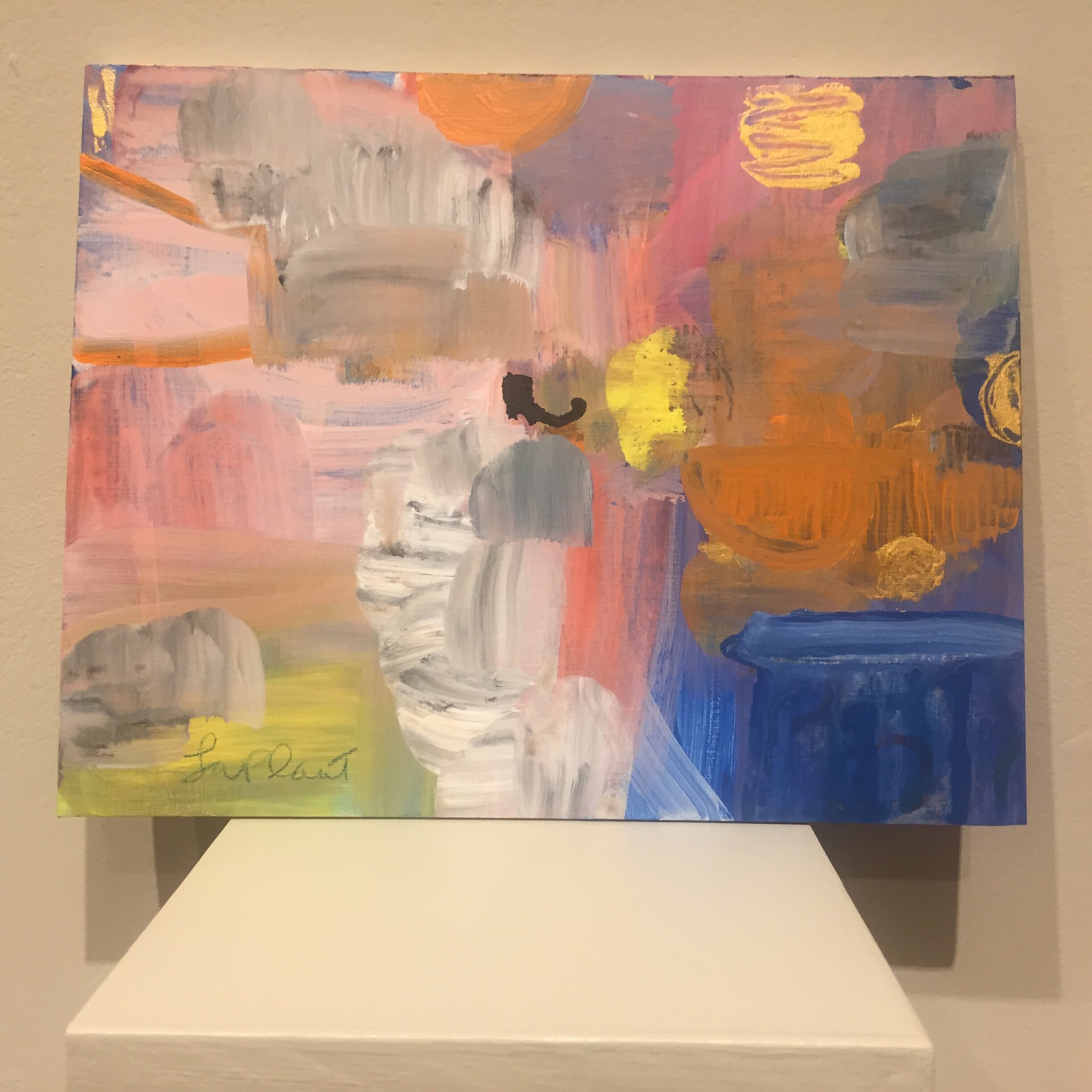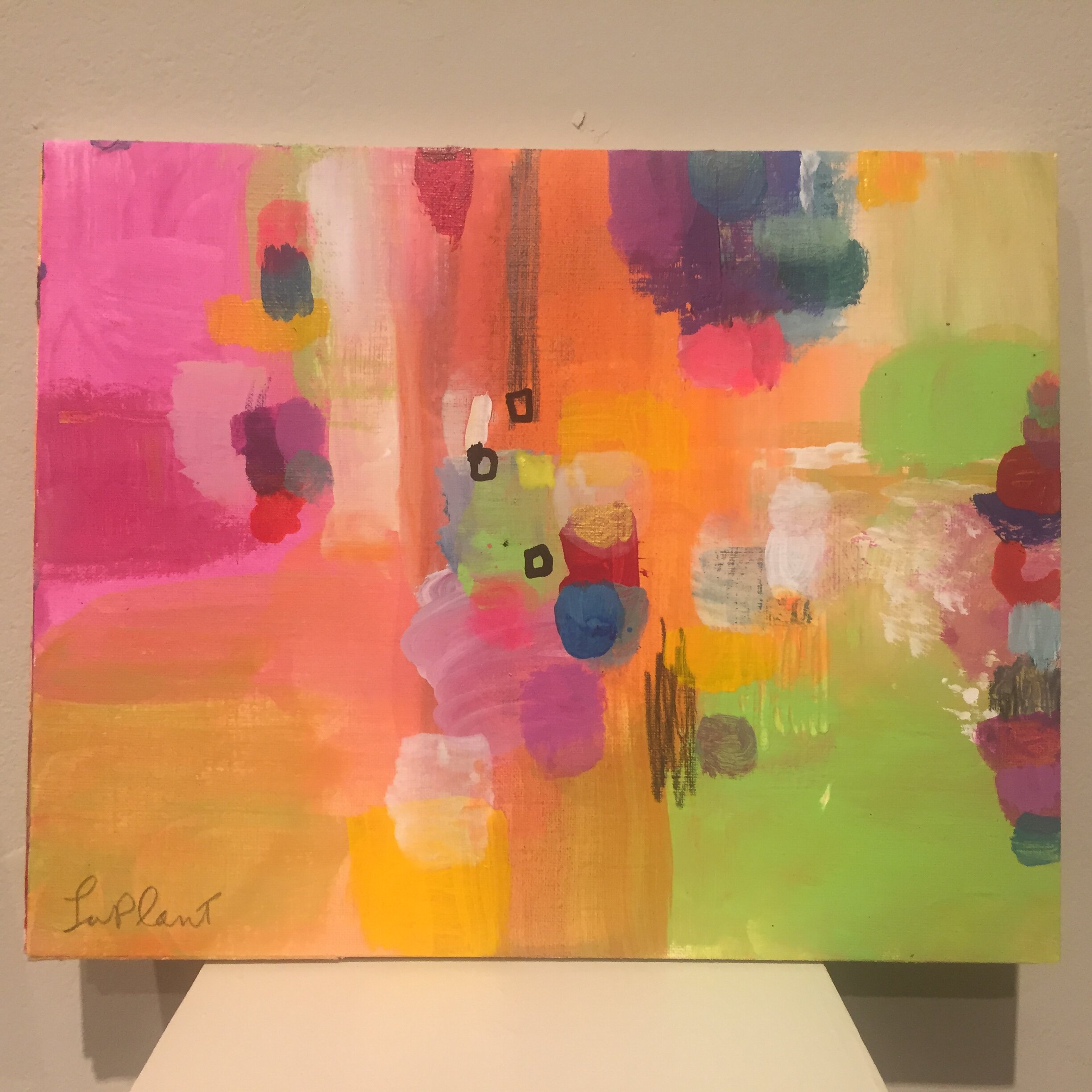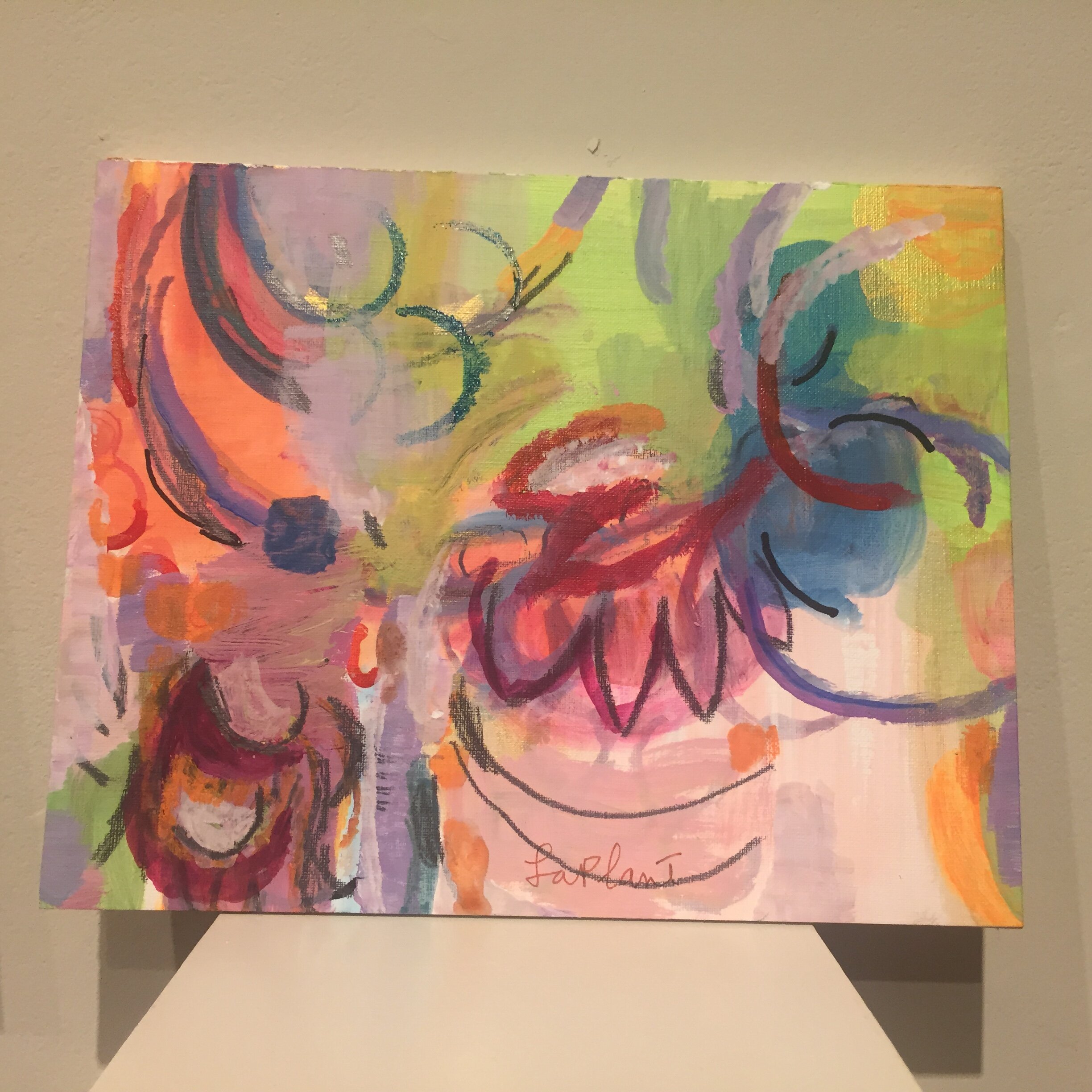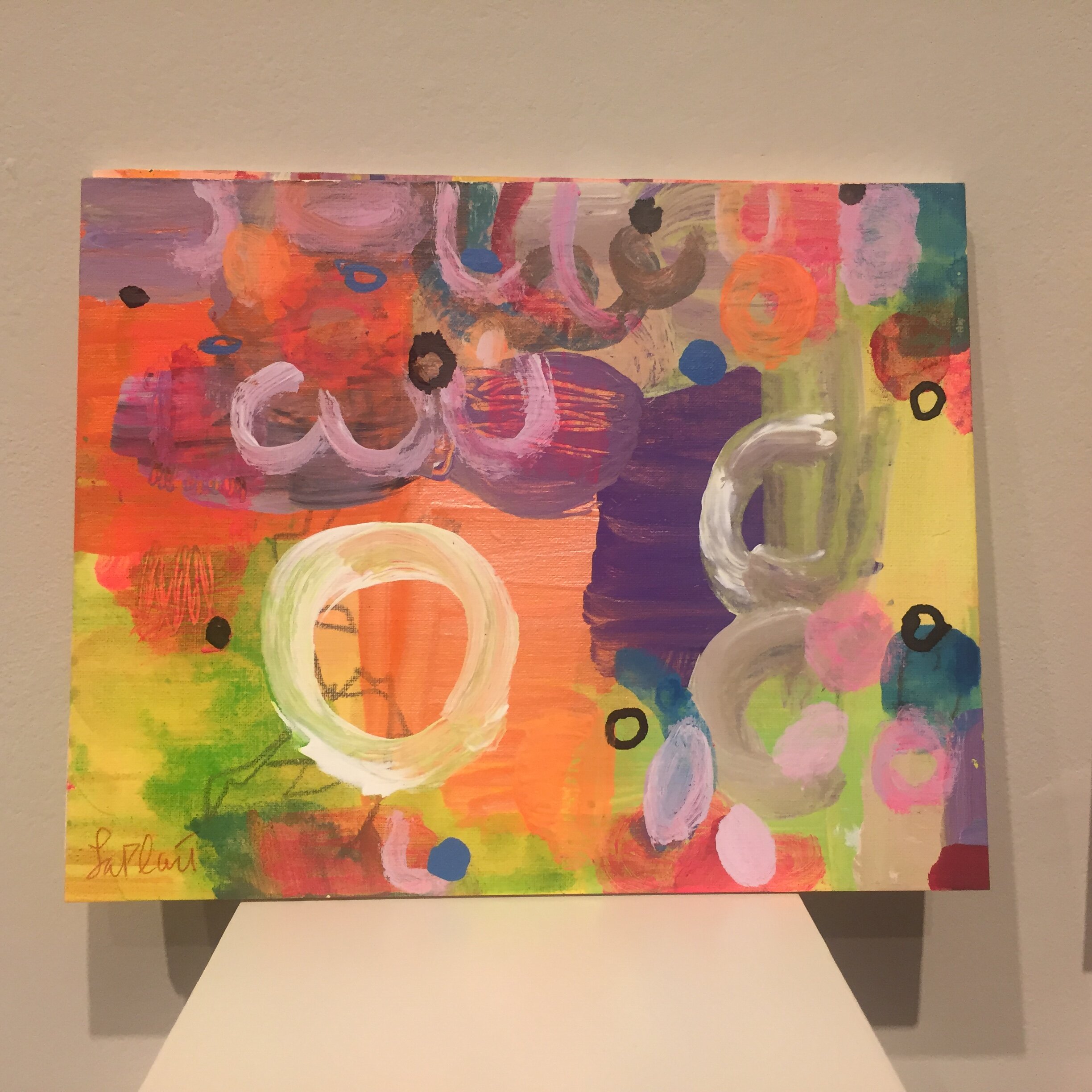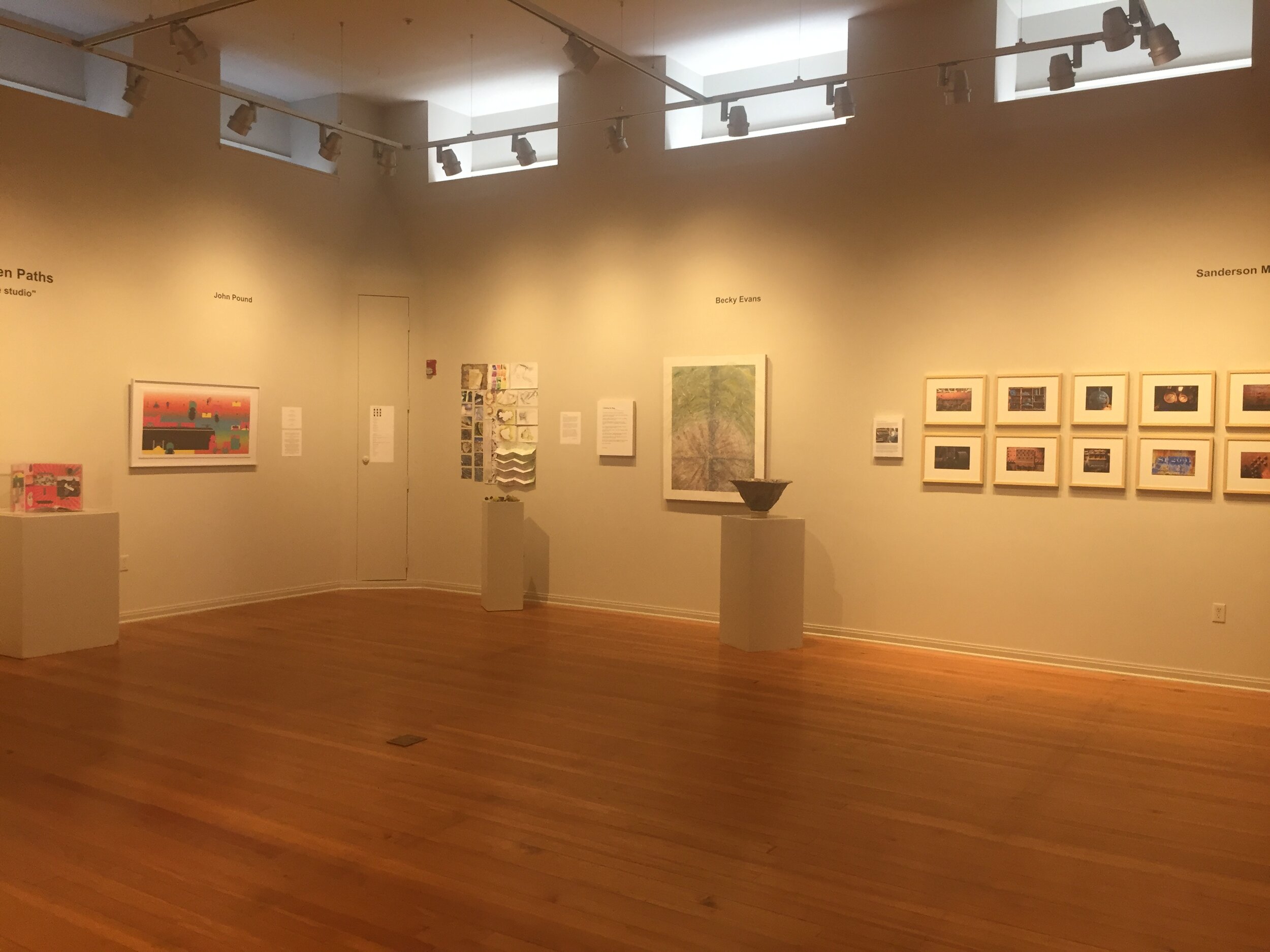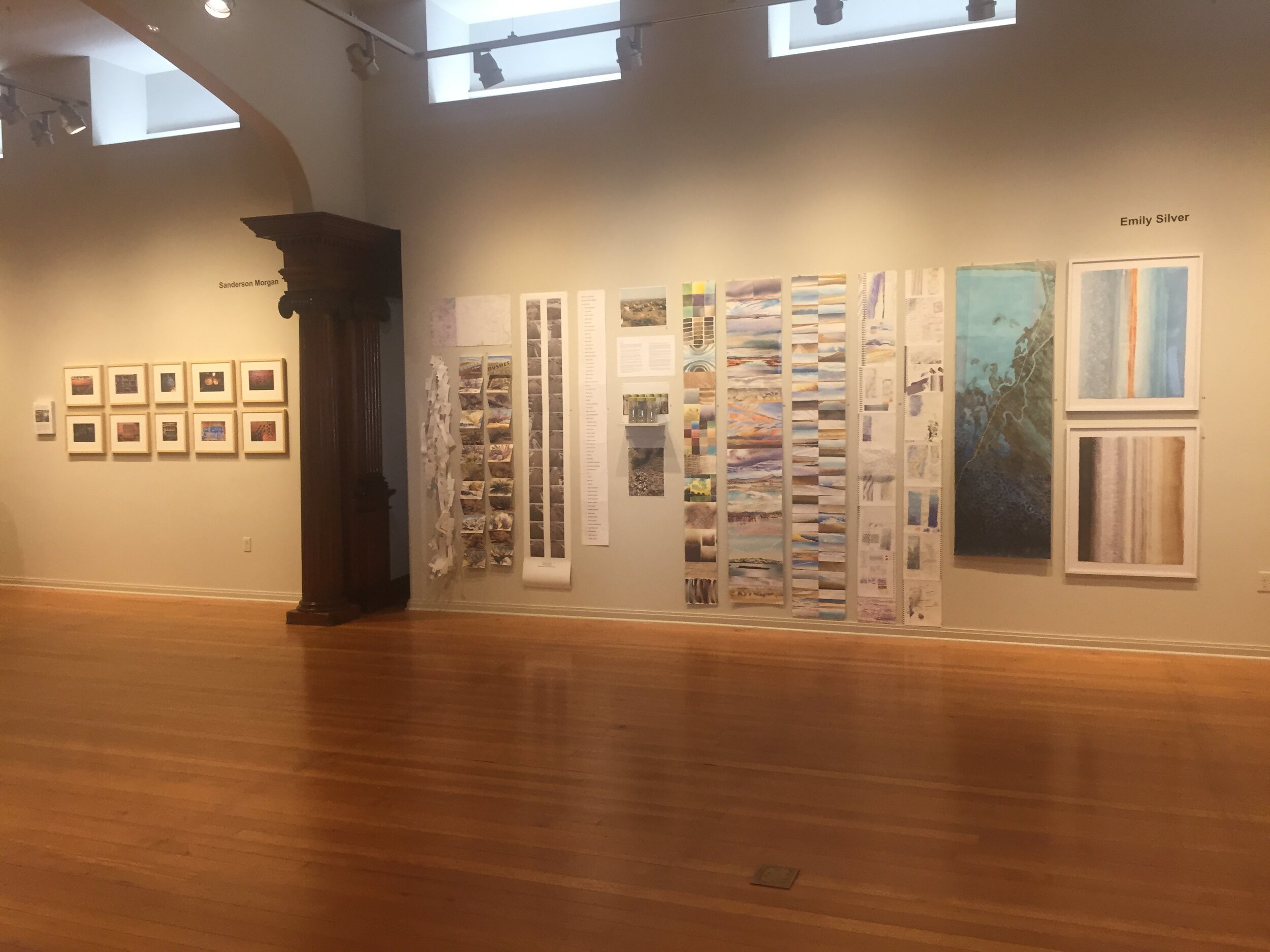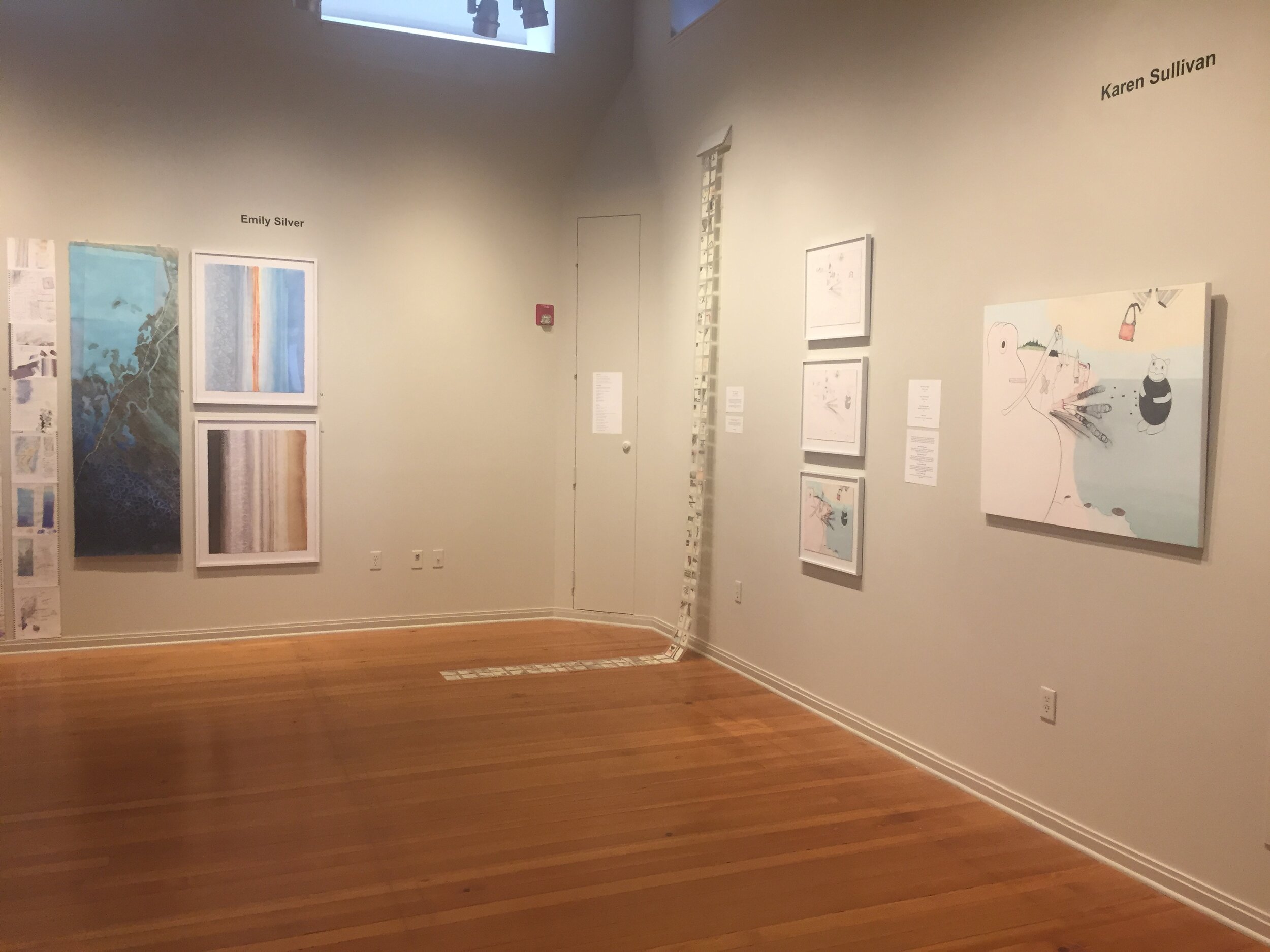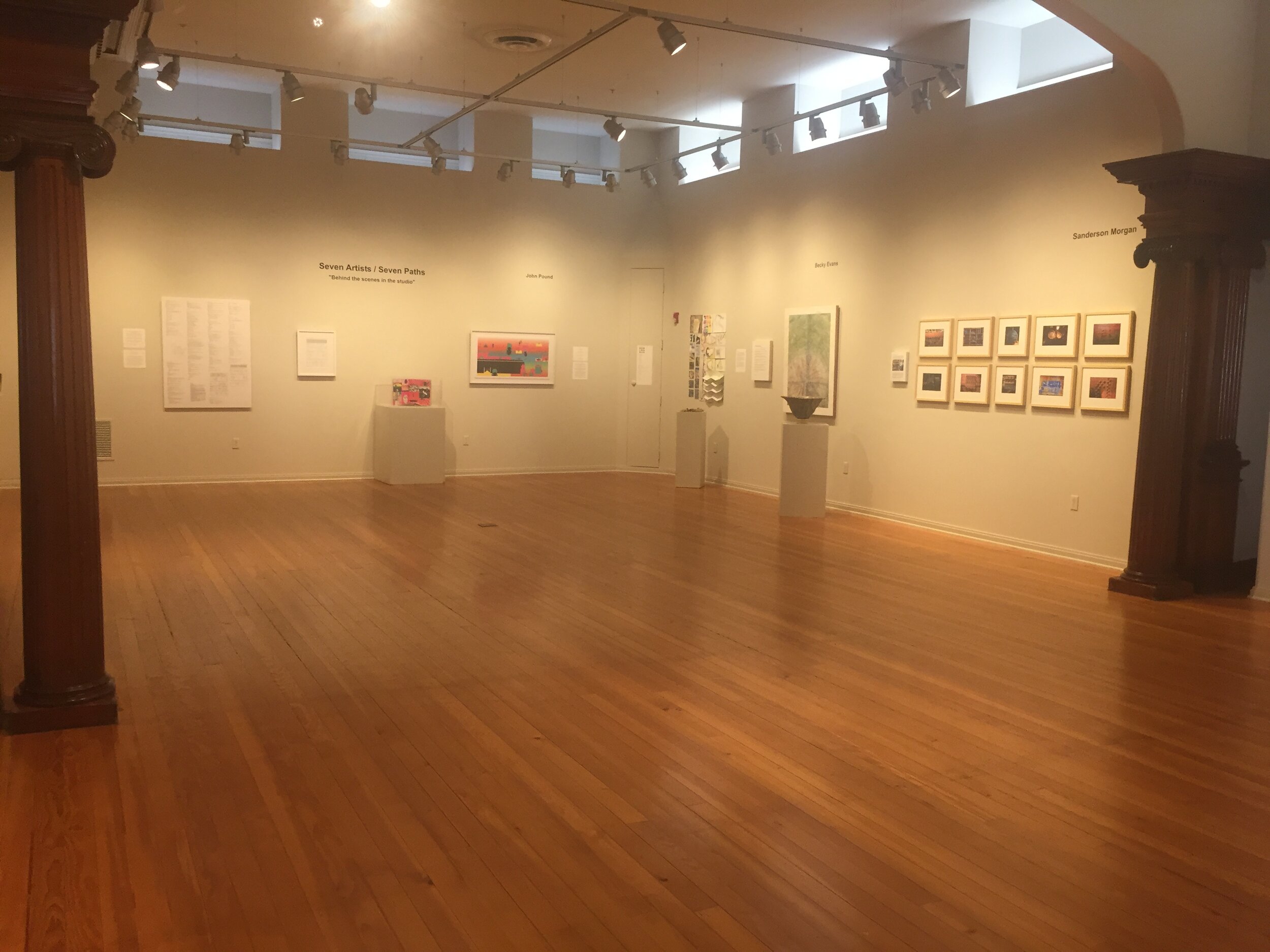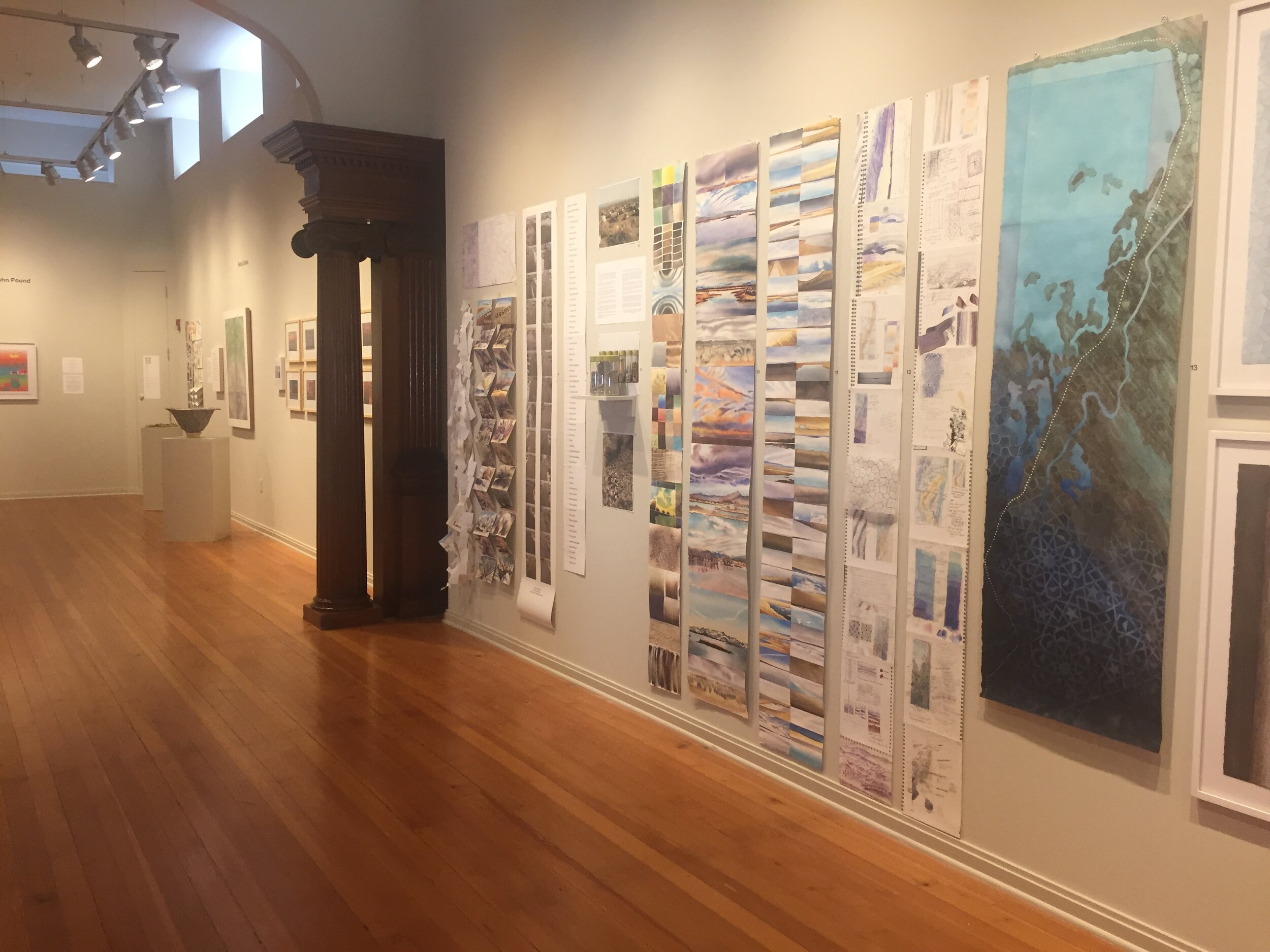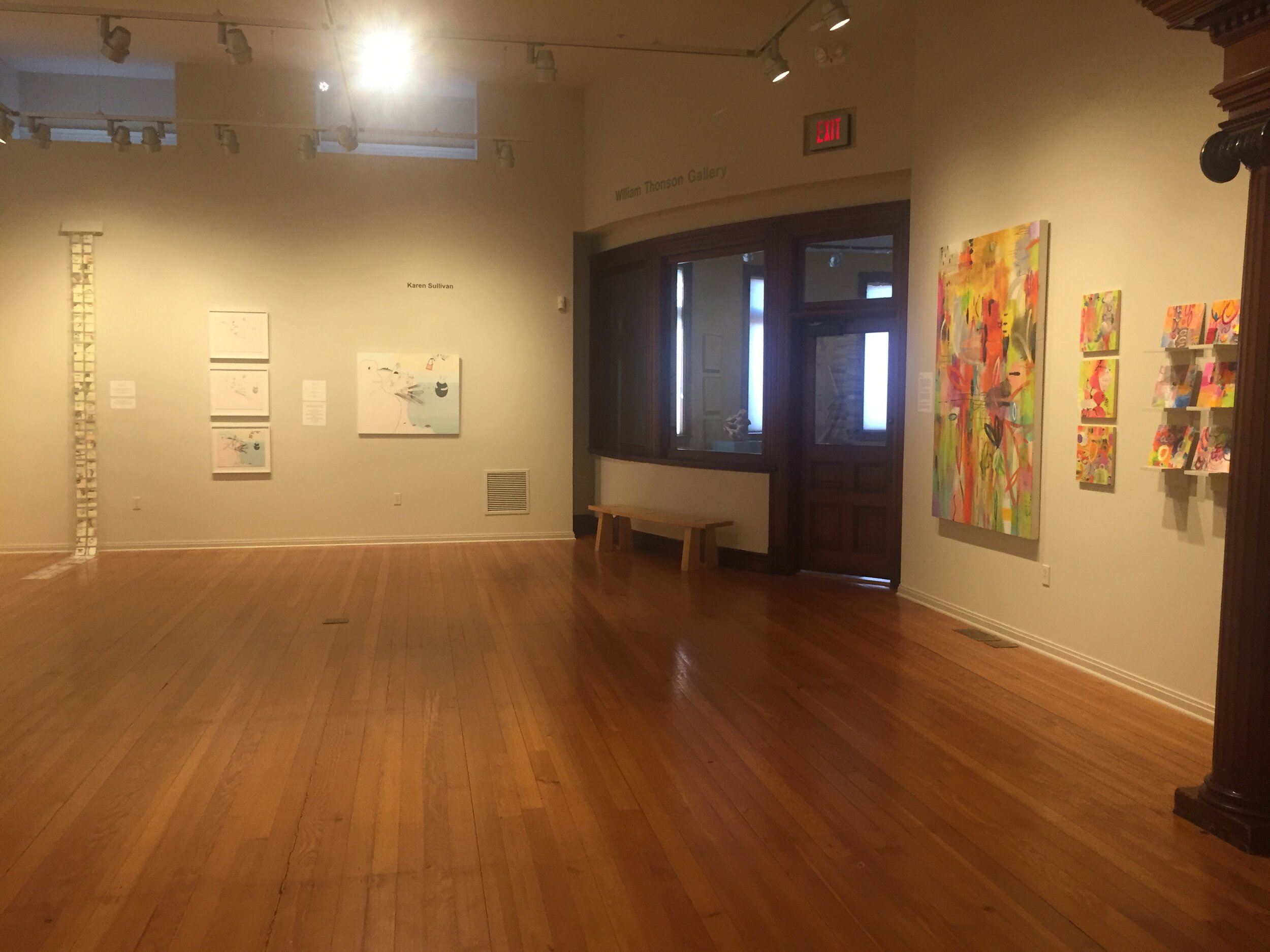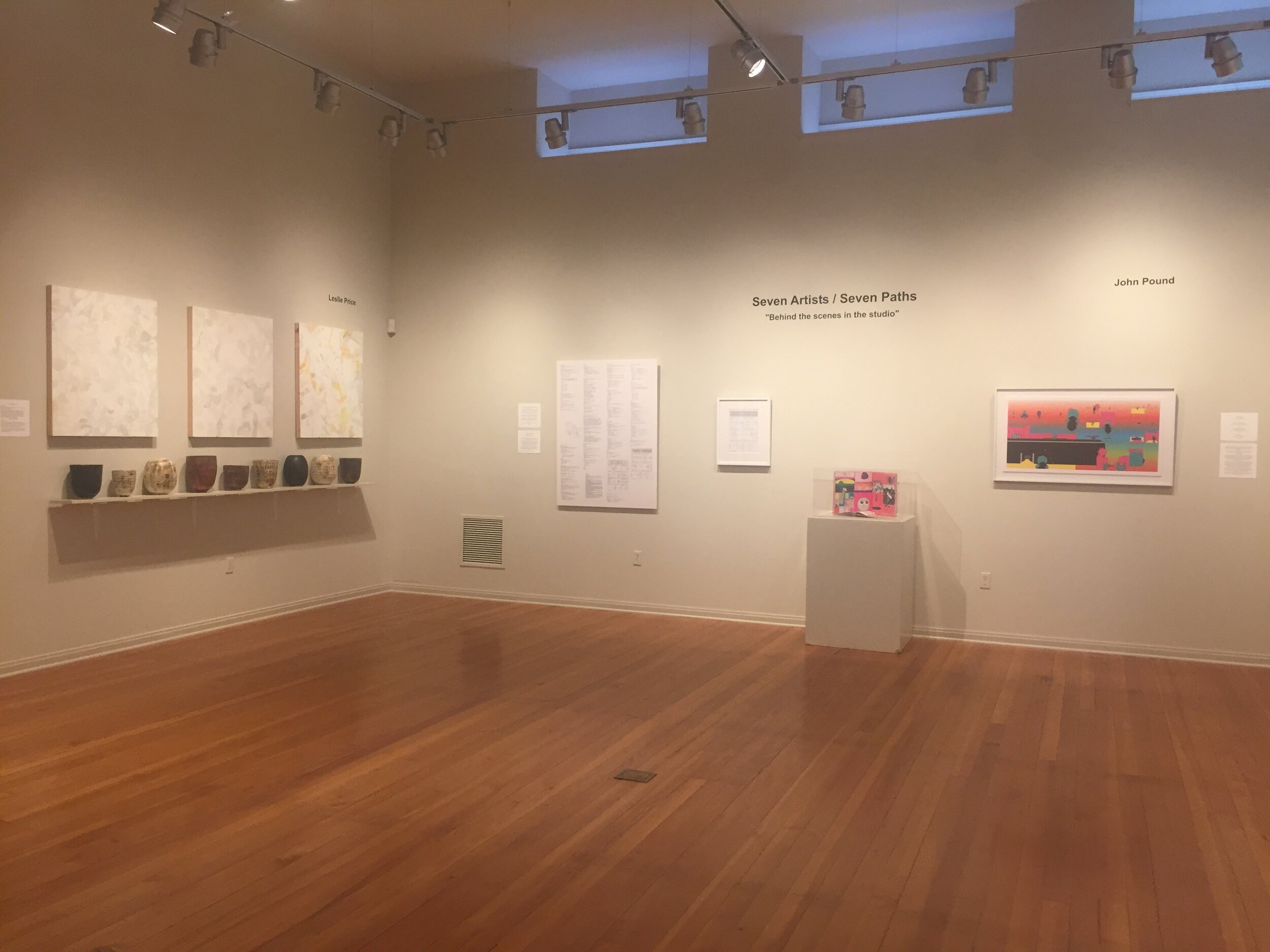Seven Artists/Seven Paths:
Behind the Scenes in the Studio
(Best viewed on a desktop computer)
NOVEMBER 21 THROUGH MAY 23, 2021
Immerse yourself in the "studios" of artists Sanderson Morgan, Karen Sullivan, Leslie Price, Becky Evans, Mimi LaPlant, John Pound and Emily Silver. This exhibition features each artist's unique work alongside statements, notes, thoughts and artifacts that influence the practice and partnership of these seven prominent Humboldt County Artists.
LESLIE KENNETH PRICE
The Influence
My Mom, when she was alive would say: “give me flowers now, while I’m alive, don’t wait until I’m dead”. I remember as child watching my Mom in our apartment tending to her houseplants, or noticing a weed pushing up through a crack of the cement sidewalk while playing outside. I was always amazed by the power of plants, particularly when it grew through tiny openings in the sidewalk. Those experiences as well as others have influenced my using the observable world, nature, as a reference to inform my paintings. I enjoy observing the natural world and the interpreting it.
ABOUT THE PAINTINGS
Gratitude..
Before beginning these works I was thinking about how grateful and fortunate I was for my ancestors, parents, family, wife, friends, my body, my mind, the opportunities I have had, and for art. Art has been a companion since I was a child, when it was introduced to me by a nurse when I was hospitalized for asthma, and could not play with my friends. I was aware of the social, political, and environmental issues globally. But in spite of all of that I still had a lot to be grateful for. How does one paint about gratitude? I did not have a clue, so I thought that I would just paint with these ideas in mind.
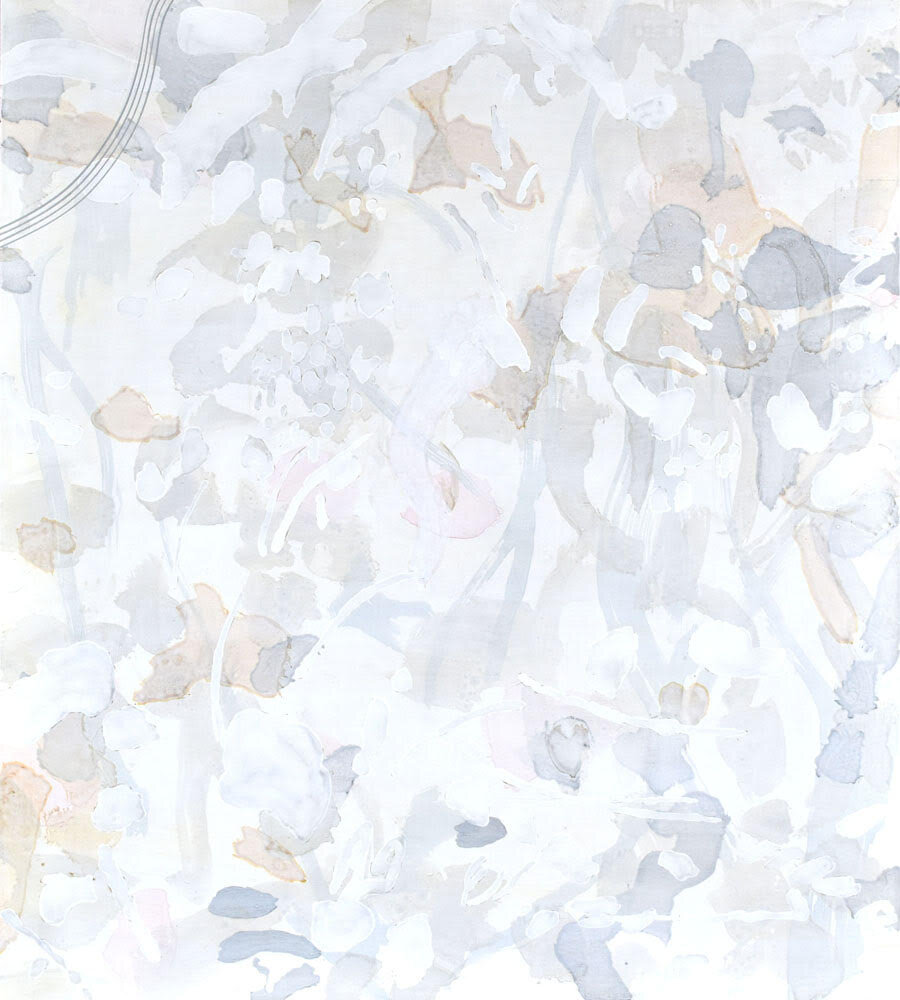

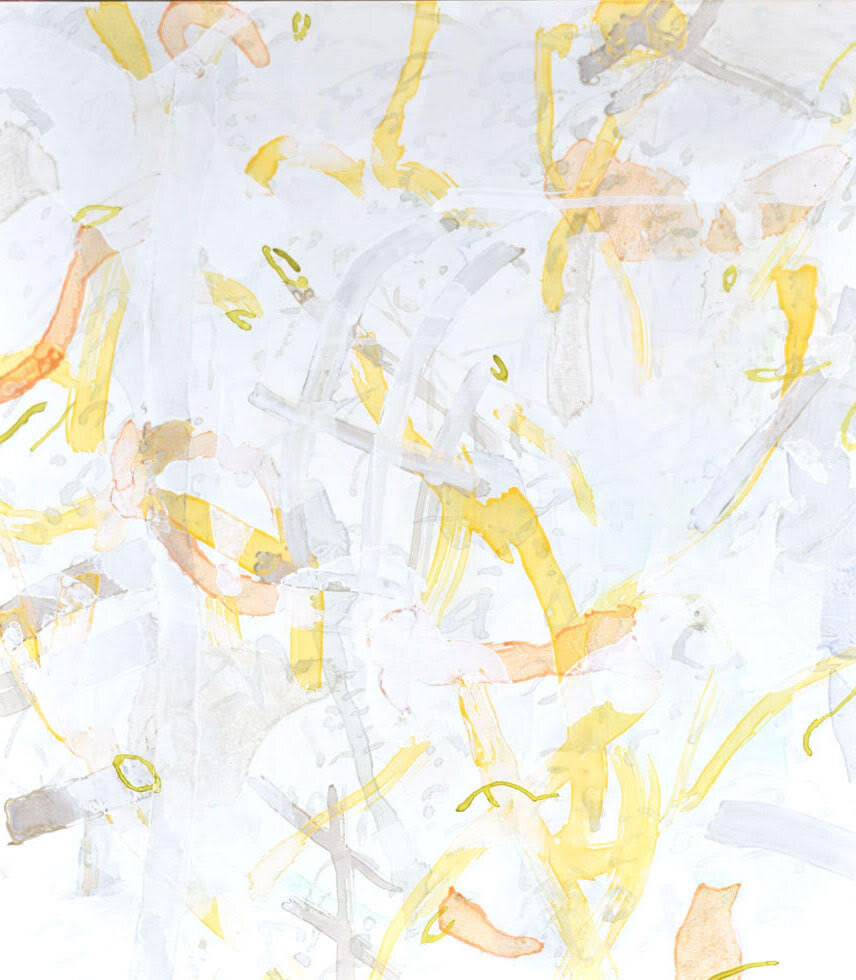
JOHN POUND
As a commercial artist and cartoonist, I craved making art that was fast and easy. When I got a computer, I wondered, could I make cartoon art with code? After months of experimenting, I started writing code that drew comic pages, with nonsense sentences, that appeared in less than a minute. I thought this was the key to the magic kingdom of art-making. Everything could be drawn with code and chance. I wanted to see more. Over the last few decades I've written code to make random comics, prints, books, and videos. I like the idea of creating art-making systems that use endless variations, making art untouched by the human hand. Sometimes with humor and mystery.
***
“Electric President”
print made from PostScript code
1992
This was my first code-made random comic page. I wanted to see some simple figures, with nonsense word balloons, in a grid of boxes, like a comic page. In the gallery, I show the actual code used to make this page, in four steps: simple figures, random sentences, a page-grid of panel-boxes, and the end page combining these parts. It took about 12 pages of code (under 600 lines). On one of my first 4 tries, my code randomly came up with “Electric President”, a title much better than I had hoped for. I was floored.
***
“CODE CARTOONING! LOOP 21”
“CODE CARTOONING! LOOP 22”
books made from PDF files made from PostScript code
2013
Over a few years of making randomly generated comics, I developed code recipes for drawing various figures and backgrounds. I sorted the recipes into general categories, like faces, figures, scenes, patterns and abstractions. Starting in 2010, I began making randomly generated sketchbooks, by having code put a random recipe into a random grid, on each page. I posted selected images on my Tumblr blog:
***
“Black Decks”
print made from PostScript code
2012
The "Black Decks" image, from one of my code art sketchbooks, derived from a panel recipe that always put a random figure in front of a random background. I liked the colors, and the balance between detail and empty space. It also surprised me that the paper, held by several little figures, which normally had parallel lines, now looked like black skateboards, thus the title “Black Decks”. That was due to a random drawing style. Code for making this image was about 80 pages.
BECKY EVANS
Unfolding the Map
My process is discovered through engagement with place. Work begins on location with walking, waiting, looking, photographing, drawing, mapping, and gathering. Each site presents itself in a different way, and I respond with a variety of materials: paint or paper or mud or stones. The pieces I create are a visceral and intellectual response to natural beauty, the majesty of geologic time, as well as to witnessed and anticipated environmental wrongs and consequences.
These pieces were sparked by place and poetry. When I first read Jerry Martien's poem, "Unfolding the Map," I felt an immediate connection. Maps often play a significant role in my process, so naturally the poem spoke to me. I was particularly drawn to the first line, "The poem is an opening. A way into the territory." My work functions in much the same manner: a way into a place, a way to know place in the largest sense.
I had Jerry's poem in mind on a recent Mt. Shasta painting excursion. On this particular trip, we had some unexpected visitors. Swarms of yellow jackets descended on our camp. Desperate for water, they were drinking out of our palettes, water containers and directly off the paintings. I recognize yellow jackets as map makers. The paper thin, striated layers of their nests, with delicate tonal and textural variations (due in part to the different chewed woods they use for building), map the yellow jackets' territory much the way geological layers map time. My muse often arrives amid the realization and experience of these types of connections.
—Becky Evans, 2020
***
Unfolding the Map
The poem is an opening. A way into the territory.
Collected and bound together, poems are a map. Like place names, the words of poems.
Instead of highway numbers, names of rivers. The poems take their direction from water.
From the estuary of the Eel to the headwaters of the Klamath. From the river of forgetting to the watershed of home.
From coastal marsh to high desert hot spring. From the doors of hell to the gates of heaven.
The poem is an entry in time. A day book. Opening into the passage of years.
From the days the poet’s aged mother comes to live with him, in an old house on the edge of the world.
Through the big quake and a life transformed by loss, to a house restored by love and work.
Into the dawn of another earth, an unfamiliar place. Get out the old map. Find where we were. Where we are now.
Deep in the territory.
-Jerry Martien
***
“Unfolding the Map – Mount Shasta Compass”, 2020
Altered map, watercolor, acrylic
30" x 40”
NFS
Detail
***
“Starting the Path”, 2020
Rocks, lichen, yellow jacket nest, sketch book pages, photographs, USGS map in Miura map fold, wildflower study in Miura map fold.
NFS -
***
“Unfolding the Map – Inverted Mount Shasta With Cumulus and Lenticular Clouds”, 2020
USGS map, yellow jacket nest, paper, acrylic
20” x 20’ x 12”
NFS
Sanderson Morgan
Usually I do drawings for exhibitions. During this past year there has been a process of shifting attention to photography and for a number of reasons. One is learning a bit about Photoshop and developing photographic images. Another is the opportunity to see and be around some very interesting things to photograph and understanding that it is only with a camera that these images can be best made.
Printing photographs has recently become possible for me to do at the home studio, I can fiddle with these images on the printers and bring them from the beautiful luminous images on the computer screen to a more opaque and richly colored photograph. So there is a lot of seeing going on in these processes. While the practiced hand of the artist is a wonderful experience to have and to present, it seems to me that the eye of the artist gets much more work with photography. This has been quite a discovery for me.
***
“Steam Box”, 2019
This is from my first visit to the Samoa Roundhouse in 2013. This apparatus, as it is explained to me, is also called a piston box by some or a valve chamber. This is where steam enters and pushes the housed piston that then pushes and pulls the crosshead back and forth on its rail and then the connected driver rod assembly begins its work; the driver wheels turn and the locomotives moves.
***
“Casting Pattern Display”, 2013
My introduction to casting patterns was within the Samoa Shop buildings. With these patterns one can reproduce many parts of many machines needing replacement. The patterns are positives which are then used to make molds for casting at a foundry. As objects of material culture, I thought them to be confident statements of industrial endurance.
***
“SP2091”, 2019
Some collection objects have surfaces that ‘read’ to me as color field paintings. The natural processes at work here combine to make an image that is stunning with its layered complexity. I’m glad I got this picture when I did, much of their railroad stock is being primed and painted to original colors - as it should be.
***
“Boiler Study # 1”, 2013
When I first saw this colossus, I was overwhelmed and fell in love. Every part of it is magnificent and worthy of a devoted care. The white grid and numbers seen on the surface of the boiler indicate an ultrasound study of the thickness of the steel. When I was last there the volunteers of the THA had affixed a cab. This is the Dolbeer & Carson #3 locomotive made in 1922 by Baldwin.
Website of the Timber Heritage Association: http://timberheritage.org
Website of M. Sanderson Morgan: https://msandersonmorgan.com
Emily Silver
My practice is driven by what Belden Lane calls “acute, personal longing for fierce terrain”. My paintings are composed of flows and aggregates of watercolor, pigment, salts, and sediments often laid over cartographic skeletons. They embody an investigation into the expressive breadth of watercolor for identifying and mapping emotional, spiritual, and poetic qualities of personally significant places. Raised in Colorado in a family of geologists and artists whose ancestors took part in the settling and mapping of the West, my deepest affinity is for our American desert.
My approach to both paint and land is visceral, intuitive, and observational. I’ve revisited many “fierce” spots over the years–to walk, collect sediment, take snapshots, make plein-aire paintings and color swatches, perform spontaneous interventions, take measurements and make maps which together feed my studio work. Often this process includes many return trips.
To illustrate my process I offer as an example a site I’ve been visiting since 1997–a dirt track near Harmon Reservoir in the Stillwater Wildlife Refuge east of Fallon, Nevada.
Beginning with an intuitive map of a particular walk, my exhibit wall illustrates the sort of systems or frameworks that serve my investigation into a singular place. I include examples of daily plein-aire sketches of individual bushes that were later bound into “postcard books.” Making sequential snapshots as I walked created a photo-narrative of a frosty road. Spontaneous interventions such as “Outdoorsmen” or my altered “Bird List” address the amount of trash I pick up. With familiarity comes a feeling of ownership–you want to take care of your place.
I often make swatches to document color and test out paint effects and flows of mud in order to create the tightest possible connection between site and paintings. I include the jars of mud from the Harmon Reservoir road which are part of my collection. In addition, I make numerous plein-aire watercolor sketches as references.
Once back in the studio “the big edit”–excision and reduction–begins–a process of challenging and refining my language to most efficiently convey my sense of place. I generate ideas for painting and carry out critiques of my work in my sketchbook, pages of which are included.
All these activities and more culminate in finished paintings. “Going In” addresses the idea of tactile and spiritual immersion in place. Paintings from my 100 Vertical Horizons series, “Harmon Winter” and “Harmon Pogonip,” are disorientations designed to tip attention more toward the action of paint and away from the pictorial while still referring to a specific moment-in-place.
“The physical act of painting is itself mysterious, profoundly disorienting,” said artist Darren Waterston. Like walking, painting is a sequential process of unfolding revelations and recognition. I’m fascinated by the physical ability of pigment suspended in water to describe transformative experiences while employing the same elemental forces that sculpt land.
1) in The Solace of Fierce Landscapes: Exploring Desert and Mountain Spirituality, New York, Oxford University Press, 1998
I’d like to credit here a sequence of amazing teachers, mentors, friends and role models who’ve inspired and drawn me through a life in art and land, most of all my parents, my husband, and my children whose love provides both reason and encouragement.
I couldn’t do it without you.
Detail
Karen Sullivan
My primary interest is in drawing. I like the cartoon simplicity of mark-making and its sense of magic. I want my work to reflect the nitty gritty of daily life, relationship dynamics, and environmental concerns. I’m interested in implied narratives. Dreams, automatic drawing, and meditation also play a part in my work and process.
***
“Yellow Falls: In the Time of Covid” March — November 2020 (detail)
graphite, color pencils, pens on Post-Its, with plastic sheets, wood valance
14 in w x 120 in h x 60 in deep
For years I’ve been making my post-it doodles while talking on the phone. They are like a stream-of-consciousness journal or diary. The doodles are filed in envelopes by month/year. Some I have used in my “Yellow Falls” series, which are site specific wall installations, sometimes covering a whole wall. In March 2020, the images and words in the drawings started looking different. This piece is a record of working on these doodles in the time of covid.
***
“Diver: Weott”
acrylic, gouache, graphite on paper mounted on board
2012, 39” w x 31” h
The “Diver” series reflects my interest in water, specifically the Eel River and Humboldt Bay. We had a cabin on the Eel River, where I spent days, weeks, swimming, fishing, sitting on the shores. I loved it. The river was robust and full. Now I see it greatly diminishing. It’s very concerning. The “Diver pieces in the show are drawings, and a color rough leading to the final “Diver: Weott” art.
Mimi La Plant
Summer 2020
Something happened this summer that made a dismal situation resonate with relief and even joy. Six women* (who were my students before the pandemic began) and I created something really wonderful. Every Thursday we would gather on my large patio. We would paint and draw and talk in the close and free way we had developed previously in the class. We laughed hilariously and nearly cried, Hugs were missed. I made 18 small paintings; I love them. They reflect the special quality of this time. Blessed.
The power of making art/celebrating intimacy is formidable. I am grateful for my fellows, my from-the-core painting, my sizable patio and the warm summer days. Thank you!!!
Along with all the above is my investigation of abstraction and nature that like vines, have become intertwined. Invested in both is my personal history, my triumphs and my failings. A love of paint and its properties, the COLOR, the mark making, the language of art, all this is part of my painting. And, the painting is a reflection of my life (inner and outer) and my love of making art.
*Kathryn Stotler, Dianne Dufala-Carroll, Cheryl Rau, Heather Verville, Nancy Frazier, Barbara Kelly
(drawing is always an essential part of my practice) Renewal is part of a garden series that began quite a few years ago as a continuation of my affinity with nature, i.e., trees, rocks, leaves.
***
“Renewal”
6’x4’
acrylic & mixed on canvas
2017
$4000
***
1) “New Space”
12x12”
acrylic & mixed on wood panel
2020
$450
2) “Getting Happy”
12x12”
acrylic & mixed on wood panel,
2020
$450
3) “Wowza”
12x12”
acrylic & mixed on wood panel
2020
$450
***
“Summer 2020” (1 thru 9)
8x10”
acrylic & mixed on board
2020
$250 each
Gallery Views:
